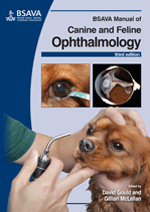
Full text loading...

The term 'fundus' describes the part of the posterior segment of the eye that is viewed with an ophthalmoscope. The chapter covers embryology, anatomy and physiology; investigation of disease; the retina and choroid; the optic nerve and optic nerve head.
The fundus, Page 1 of 1
< Previous page | Next page > /docserver/preview/fulltext/10.22233/9781910443170/9781910443170.18-1.gif

Full text loading...

































































